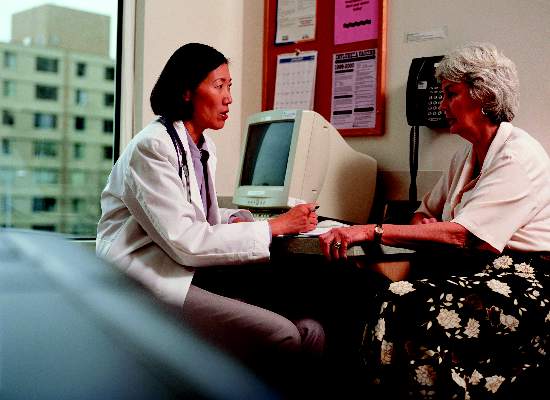FROM THE JOURNAL OF CLINICAL ONCOLOGY
Extreme users of disease-monitoring tests do not have significantly improved overall survival, investigators reported.
A review of Surveillance, Epidemiology, and End Results (SEER) Medicare data on 2,460 women older than 65 years of age with advanced breast cancer revealed that 924 patients (37.6%) were extreme users of disease-monitoring tests, defined as having had more than 12 serum-tumor marker (STM) tests and/or more than four radiographic imaging tests in a 1-year time period.
“The objectives of this study were to identify patterns and predictors of use and extreme use of disease-monitoring tests among women with [metastatic breast cancer],” reported Dr. Melissa Accordino of Columbia University, New York, and her colleagues (JCO. 2016 May 9. [ doi: 10.1200/JCO.2016.66.6313] ).
The investigators reviewed SEER Medicare data on women with pathologically confirmed metastatic breast cancer diagnosed from 2002 to 2011. Costs of care were calculated from Medicare reimbursement claims from physician, hospital, outpatient, durable medical equipment, and hospice filings from the date of diagnosis through the date of death or the end of the study period. Per-patient-per-year serum tumor marker testing rate and per-patient-per-year radiographic imaging rates were calculated.
Of the 2,460-person cohort, 37.6% were classified as extreme users (9% were extreme users of STM and 32.8% were extreme users of radiographic imaging tests), Dr. Accordino and her associates reported.
There was no difference in overall survival between extreme users and the rest of the cohort (HR, 0.93; 95% CI, 0.86-1.02).
A multivariate model showed that women who were older than 80 years (OR, 0.58; 95% CI, 0.45-0.75) and patients who were single (OR, 0.77; 95% CI, 0.63-0.93) were less likely to be extreme users while patients who had more frequent oncology-related doctor’s visits were more likely to be extreme users (OR, 3.14; 95% CI, 2.49-3.96).
A linear regression model revealed that costs of care were significantly higher for patients categorized as extreme users whose mean annual cost of care was 50.6% (95% CI, 40.7-61.1) higher than the mean cost of care for those who weren’t extreme users (P less than .001).
“In addition to cost, frequent disease monitoring can be associated with emotional harm. The prevalence of anxiety and depression among patients with advanced cancers is estimated to be 25%-65%. Previous work has shown that depression and anxiety can increase over time in patients with metastatic solid tumors and has been attributed to multiple factors, including fear of death and fear of disease progression. … In a study that assessed distress in women during the surveillance period, women with more frequent testing had higher levels of anxiety without survival benefit,” the investigators wrote.
The investigators also discussed the potential conflict of interest for physicians who benefit financially from disease-monitoring tests. “A successful strategy may be to change policy for reimbursement,” they wrote.
“In addition, better evidence is needed with regard to the benefits and harms of frequent disease-monitoring testing to inform guidelines,” the investigators wrote. “Future research should determine the most cost-effective strategy to monitor patients with [metastatic breast cancer].”
This study was supported by fellowships and grants from the National Cancer Institute, the ASCO/Breast Cancer Research Foundation, and the Conquer Cancer Foundation. Dr. Accordino reported having no disclosures. One investigator reported having a consulting/advisory role with Pfizer, TEVA Pharmaceutical Industries, Otsuka, United Biosource, and EHE International.
On Twitter @JessCraig_OP





